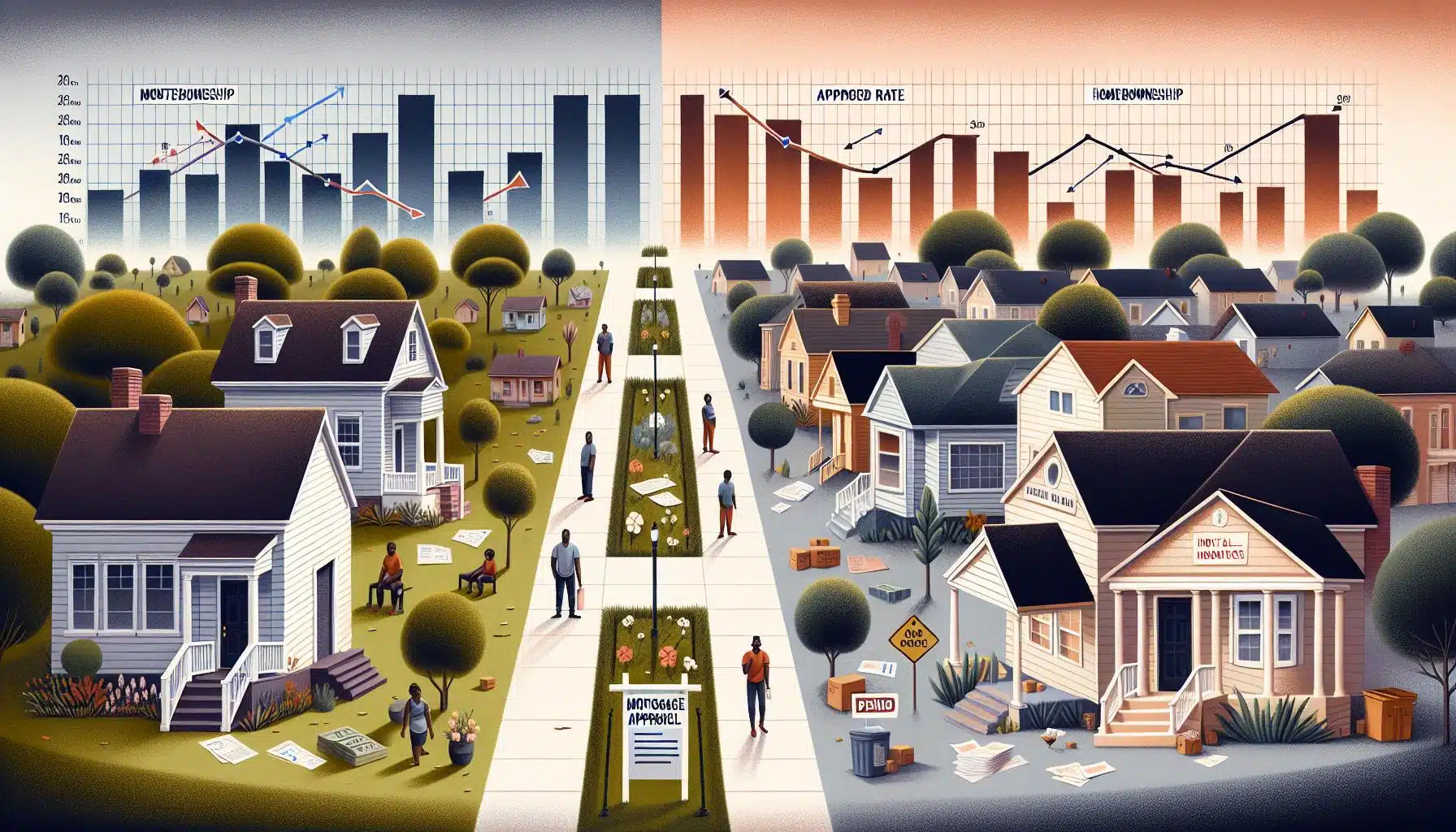Are you dreaming of buying a home but worried that the system might not be in your favor? You’re not alone. For many Americans—especially Black and Hispanic families—owning a home remains out of reach, not just because of money, but because of deep-rooted inequalities in the mortgage system.
In today’s blog post, we’re diving into what’s known as the “mortgage gap”—what it is, why it exists, and more importantly, how we can begin to close it.
What Is the Mortgage Gap?
Let’s keep it simple. The mortgage gap refers to the gap in mortgage loan approval rates between white borrowers and borrowers of color—especially Black and Hispanic individuals.
According to federal data, even when Black and Hispanic applicants have similar income and credit profiles as white applicants, they’re more likely to be denied a mortgage. And even when approved, these buyers often pay more in interest and fees. That’s not just a bump in the road—that’s a major roadblock to building generational wealth.
Why Is This a Big Deal?
Owning a home is one of the most reliable ways to build wealth in the U.S. Without access to fair home loans, entire communities get left behind.
Let’s put it this way: imagine you’re in a race, but while everyone else gets to start on the track, you’re forced to begin uphill. Over time, that extra effort adds up. That’s what this mortgage gap feels like for many minority borrowers.
What Causes the Mortgage Gap?
It’s not just one thing—several factors contribute to this problem:
- Historic discrimination: Redlining and segregation policies from decades ago still echo today, limiting where Black and Hispanic families can live and build equity.
- Credit score differences: Due to limited access to credit-building tools, minority borrowers often have lower credit scores—not necessarily because they’re less creditworthy, but because the system isn’t designed for them.
- Lower wealth and income: Systemic inequalities have made it harder for these communities to accumulate savings or income, making home buying more challenging.
- Loan process bias: Even with automation and standard procedures, studies show that mortgage lenders may still show bias in decision-making.
Does this surprise you? Unfortunately, it’s a pattern that’s been around for generations.
Why Credit Scores Don’t Tell the Whole Story
Most mortgage lenders use credit scores to decide who gets a loan and at what interest rate. But credit scores don’t always reflect the true financial behavior of borrowers—especially those who don’t have traditional credit histories.
For example, someone might pay rent and utilities on time for years, but those payments don’t count toward their credit. That means many responsible would-be homeowners are shut out of the system just because the system doesn’t see them.
So, How Can We Fix This?
There’s no magic wand, but there are real solutions out there. Here’s what’s being done—and what more needs to happen—to give every American a fair shot at owning a home:
1. Embracing Alternative Credit Data
One of the most exciting ways to shrink the mortgage gap is by giving credit where credit is due—literally.
Instead of just looking at traditional credit cards and loans, lenders can begin factoring in other types of payment history, like:
- Rent payments
- Utility bills
- Phone and internet bills
This gives a fuller picture of a person’s financial responsibility—and opens the door for more people to qualify for a mortgage.
2. Government Policy to Close the Gap
The Federal Housing Finance Agency (FHFA) and other regulators are stepping in to make lending more inclusive.
For example:
- Fannie Mae and Freddie Mac are starting to use programs that allow rental payment history to help evaluate mortgage applications.
- Community Reinvestment Act updates aim to hold banks more accountable for serving underserved neighborhoods.
Progress is slow, but it’s happening.
3. Supporting Community-Based Lenders
Not all lenders are created equal. Community development financial institutions (CDFIs) and minority-serving lenders have a better track record in reaching borrowers of color.
These lenders often offer:
- More flexible credit requirements
- Culturally responsive customer service
- Educational resources for first-time buyers
Think of them as the hometown heroes of the mortgage world—working on the frontlines to make home loans fairer.
4. Education and Awareness
Homebuying can be confusing, no matter who you are. But for communities that have faced decades of exclusion, the lack of access to homebuyer education makes things even tougher.
Programs that teach financial literacy and walk people through the mortgage process are essential. The more confident and informed someone is, the better their chances of getting a fair deal.
Real People, Real Impact
Let’s talk about Mike and Serena, a young couple from Atlanta. They’ve been renting for years, always paying on time. Mike has a steady job, and Serena runs her own business from home.
Even though they saved up for a down payment, their mortgage application was denied due to lack of credit history. Sounds frustrating, right?
But after connecting with a local credit union that used rental and utility payments as additional credit data, they were finally approved. Today, they live in a modest, but beautiful, three-bedroom home—and are building the kind of financial future that was once out of reach.
There are thousands of stories like Mike and Serena’s—but we need more.
What Can You Do?
This isn’t just a government or lender problem. We all have a role to play in closing the mortgage gap.
Here are a few steps you can take:
- Support policies that promote fair lending.
- Educate yourself and others about financial literacy and the home buying process.
- Use alternative credit services that report rent and utility payments to credit bureaus.
- Encourage transparency in lending and ask your lender what programs they offer for first-time or underserved buyers.
Final Thoughts: A Fair Shot at the American Dream
The mortgage gap didn’t appear overnight—and it won’t disappear overnight either. But change is possible.
By rethinking credit rules, holding lenders accountable, and pushing for more inclusive homebuying practices, we can start closing the gap—one home at a time.
Whether you’re on the homebuying journey yourself, helping a friend, or simply learning more, remember this: The path to owning a home should be based on fairness—nothing less.
Are you ready to help close the gap?
Let us know what you think in the comments below. Have you or someone you know experienced unfair lending practices? Share your story—we’re listening.

